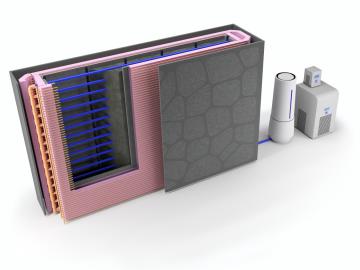
Filter News
Area of Research
- Advanced Manufacturing (3)
- Biology and Environment (48)
- Building Technologies (2)
- Computational Biology (1)
- Computational Engineering (1)
- Computer Science (7)
- Electricity and Smart Grid (2)
- Energy Science (69)
- Energy Sciences (1)
- Fusion and Fission (5)
- Fusion Energy (1)
- Isotopes (3)
- Materials (21)
- Materials for Computing (5)
- National Security (15)
- Neutron Science (8)
- Nuclear Science and Technology (3)
- Quantum information Science (3)
- Sensors and Controls (1)
- Supercomputing (40)
News Type
News Topics
- (-) Grid (54)
- (-) Machine Learning (51)
- (-) Mercury (10)
- (-) Microscopy (34)
- (-) Space Exploration (23)
- (-) Summit (48)
- 3-D Printing/Advanced Manufacturing (89)
- Advanced Reactors (25)
- Artificial Intelligence (92)
- Big Data (62)
- Bioenergy (84)
- Biology (100)
- Biomedical (53)
- Biotechnology (28)
- Buildings (50)
- Chemical Sciences (48)
- Clean Water (30)
- Composites (21)
- Computer Science (153)
- Coronavirus (30)
- Critical Materials (17)
- Cybersecurity (17)
- Education (2)
- Emergency (4)
- Energy Storage (64)
- Environment (164)
- Exascale Computing (52)
- Fossil Energy (7)
- Frontier (45)
- Fusion (47)
- High-Performance Computing (93)
- Hydropower (12)
- Irradiation (2)
- Isotopes (38)
- ITER (7)
- Materials (87)
- Materials Science (89)
- Mathematics (11)
- Microelectronics (3)
- Molten Salt (7)
- Nanotechnology (29)
- National Security (63)
- Neutron Science (109)
- Nuclear Energy (85)
- Partnerships (37)
- Physics (38)
- Polymers (18)
- Quantum Computing (39)
- Quantum Science (58)
- Security (17)
- Simulation (51)
- Software (1)
- Statistics (3)
- Transportation (66)
Media Contacts

As ORNL’s fuel properties technical lead for the U.S. Department of Energy’s Co-Optimization of Fuel and Engines, or Co-Optima, initiative, Jim Szybist has been on a quest for the past few years to identify the most significant indicators for predicting how a fuel will perform in engines designed for light-duty vehicles such as passenger cars and pickup trucks.

Planning for a digitized, sustainable smart power grid is a challenge to which Suman Debnath is using not only his own applied mathematics expertise, but also the wider communal knowledge made possible by his revival of a local chapter of the IEEE professional society.

There are more than 17 million veterans in the United States, and approximately half rely on the Department of Veterans Affairs for their healthcare.

New capabilities and equipment recently installed at the Department of Energy’s Oak Ridge National Laboratory are bringing a creek right into the lab to advance understanding of mercury pollution and accelerate solutions.

Popular wisdom holds tall, fast-growing trees are best for biomass, but new research by two U.S. Department of Energy national laboratories reveals that is only part of the equation.

Scientists at ORNL and the University of Nebraska have developed an easier way to generate electrons for nanoscale imaging and sensing, providing a useful new tool for material science, bioimaging and fundamental quantum research.

Radioactive isotopes power some of NASA’s best-known spacecraft. But predicting how radiation emitted from these isotopes might affect nearby materials is tricky

Oak Ridge National Laboratory researchers used additive manufacturing to build a first-of-its kind smart wall called EMPOWER.

Oak Ridge National Laboratory researchers have developed a machine learning model that could help predict the impact pandemics such as COVID-19 have on fuel demand in the United States.

ORNL researchers have developed an intelligent power electronic inverter platform that can connect locally sited energy resources such as solar panels, energy storage and electric vehicles and smoothly interact with the utility power grid.


